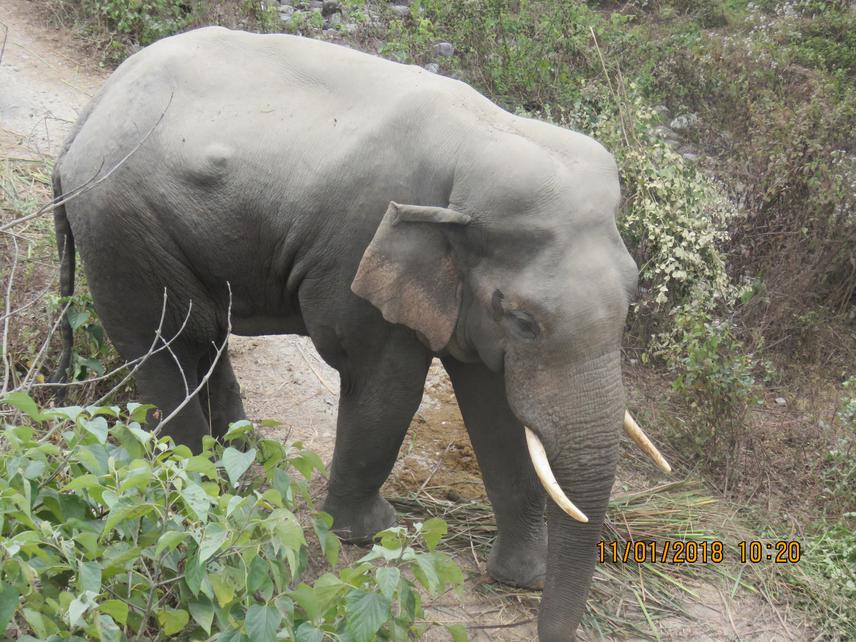Ashok Kumar Ram
Other projects
19 Aug 2013
Geospatial Modelling to Assess Asian Elephant (Elephas maximus) Habitat Suitability, Migratory Routes and Human Elephant Interface in Eastern Nepal
1 Oct 2019
Landscape Level Modelling of Asian Elephant (Elephas maximus) Habitat, Home Range and Human Elephant Interactions in Terai Arc Landscape (TAL) Nepal
29 Mar 2022
Strengthening Human Elephant Coexistence (HECx) in Western Terai Landscape of Nepal
To study habitat suitability, migratory pattern and human elephant conflicts and its coexistence in central Nepal.

Asian Elephants (Elephus maximus) are distributed in four fragmented population in Nepal. There 45 elephants inhabiting in central Nepal and are sharing both protected area as well as outsider habitat. These elephants migrated from Parsa wildlife reserve (Parsa district) to Sarlahi district. 3-5 elephant killed in retaliation each year and 5-10 people lost their lives during negative interaction with elephant. It is because of lacking safety migration of elephants in the study area due to breaches of protected corridor linkage. Details of habitat, migratory status and human elephant interaction is lacking. A very few study on habitat suitability, migratory route and human elephant coexistence is carried out in this project is originated as a milestone study which will help to prepare conducive environment for human elephant coexistence in the study area.
Study area experiences tropical & subtropical climate with maximum rainfall with temperature ranging from 35 °C to 45 °C. It is located in between 27°28’29” N , 84°34’20” & 26°47’31”, 86°08’50”.The rich forest cover support a wide variety of flora and fauna. Faunal species including one horned Rhinoceros, Wild elephant (Elephus maximus), Bison, Bengal Tiger, leopard (Panthera pardus), gaur (Bos gaurus). Floral species are Shorea robusta, Dalberigia, Bobax, Mallotus philipinensis, Delenia, Adina and Anogesius latifolia etc. Human casualties, Retaliatory killings, habitat fragmentation, agriculture and settlement expansion and bottleneck obstruction are some major conservation concern. Study will be carried out in a synergistic way both ground survey and spatial analysis. Field work will be carried out in 45 days with intensive night camping by 15 naturalist having good knowledge on elephant behavior.
Asian Elephant (Elephus maximus) habitat suitability, migratory routes, Human lephant interface (HEC) and its impacts on people’s wellbeing will be assessed through eospatial modelling in central Nepal. Habitat suitability will be assessed through MaxEnt modelling, HEC conflict zones & migratory routes will be identified by using GIS and remote sensing. Shannon Weiner Index (H), Index of species reduction (ISR) will be assessed for identification of habitat status. Conservation awareness program will be conducted in two highly HEC impacted zones. Study will be commenced between October 2016 and September 2017.
Finally this project will draw attention of government to initiate habitat conservation, conservation awareness program to maintain corridors and connectivity along East-West forest and help to mitigate human wildlife conflict for better management of elephants in central Nepal.